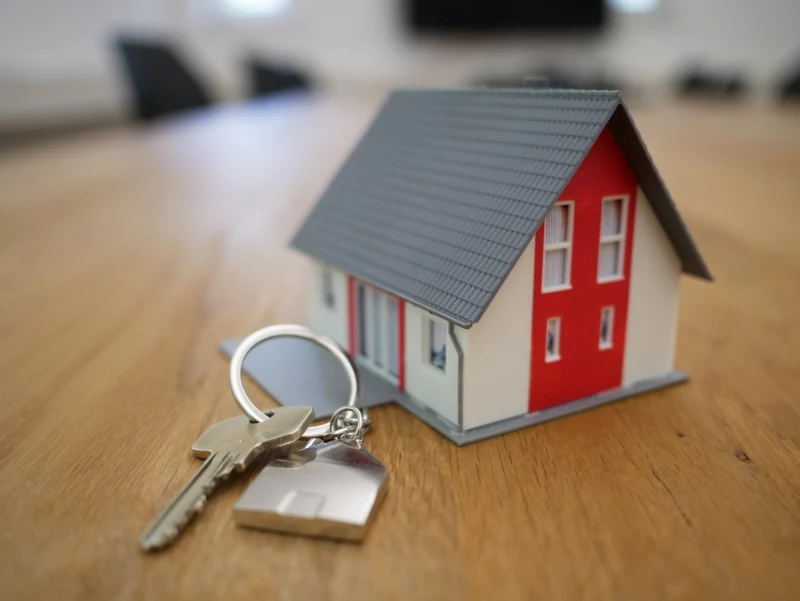3 Big Shifts I’m Seeing in the Housing Market (And What They Actually Mean for You)
After a couple of decades in the real estate game, you learn to read the tea leaves. You see, a house is never just a pile of lumber and drywall; it’s a snapshot of a family’s life, their hopes, and their financial reality. And when you look at thousands of those snapshots, you start seeing the bigger picture—the patterns that tell a story about where we’re all headed.
In this article
I’ve been on the front lines, helping people from nervous first-timers to seasoned investors. And lately, the pace of change has been just… incredible. Things that were slowly bubbling under the surface have exploded into full-blown trends. It’s not just numbers on a chart; it’s about the real human stories behind why people are moving.
So, let’s get into it. I want to walk you through the three biggest shifts I’m seeing from my perspective on the ground: the massive migration to smaller towns, the wild ride of interest rates, and how tax rules are literally redrawing the map. Understanding the ‘why’ is your best tool for making a smart move.

The Great Reshuffle: Is a ‘Zoom Town’ Right for You?
For most of my career, the mantra was ‘location, location, location,’ which always meant being close to a big city. The commute was just the tax you paid for a good job and a nice life in the suburbs. But that foundation has completely cracked.
The rise of remote work didn’t start this, but it sure poured gasoline on the fire. When companies proved they could run just fine with everyone working from their kitchen tables, the anchor was lifted. Suddenly, ‘location’ wasn’t about the office; it was about lifestyle. If your job is on your laptop, your office can be anywhere with a decent internet connection. This gave birth to the so-called ‘Zoom Towns.’
I’ve seen it firsthand. I had clients sell a tiny condo in a major California tech hub and take that cash to a place like North Carolina, where they bought a house twice the size with a huge yard. They traded traffic for hiking trails and lowered their cost of living dramatically. It’s a powerful narrative.

By the way, here’s a fun trick if you want to see this in action. Go to a major moving truck rental website. Price out a 20-foot truck going from, say, San Francisco to Boise. Then, price the exact same truck for the return trip from Boise back to San Francisco. That price difference tells you the whole story of supply and demand in real-time.
The Risks of a Boomtown
But it’s not all sunshine and roses. I always tell my clients to look past the glossy magazine articles. When a town grows too fast, its infrastructure—schools, roads, water systems—creaks and groans under the pressure. The one grocery store suddenly has lines out the door, and the main road into town becomes a parking lot.
There’s also a real financial risk. Buying at the absolute peak of a frenzy is always dangerous. What if companies decide they want people back in the office, even part-time? Demand in those remote havens could soften, and you don’t want to be the one who bought at the top.

From my experience, desperation leads to bad decisions. A few years back, a client was in a bidding war and wanted to waive the home inspection to win. I pushed back—hard. They lost the house, but we later found out the winner discovered a cracked foundation, a fix that cost over $40,000. For the $500 to $700 an inspection would have cost, my clients dodged a financial bullet and found a better house a month later. Skipping your protections is a gamble I almost never recommend.
Your ‘Zoom Town’ Due Diligence Checklist
Thinking of making the leap? ‘Do your homework’ is vague advice. Here’s a real checklist:
- Do a ‘Test Run’: Spend more than a weekend there. Go during the dreary off-season, not just on a perfect summer day. See what it’s really like.
- Talk to Locals: Seriously. Go to the local coffee shop, brewery, or hardware store and just chat with people. Ask them what they love and what drives them crazy about the town.
- Check the Connection: Don’t just take the listing’s word for it. Check internet reliability with providers. Ask people in a local social media group what their service is actually like. Bad internet can be a deal-breaker for a remote worker.
- Investigate the Nuts and Bolts: Look up the town’s public budget and city council meeting minutes online. Are they planning for growth? Investing in schools, roads, and parks? Or are they overwhelmed?
- Healthcare Reality Check: How far is the nearest quality hospital? Are local doctor’s offices accepting new patients? This is a huge quality-of-life factor that people often forget until they need it.

That Double-Edged Sword: Interest Rates & Home Equity
Nothing moves the housing market quite like interest rates. They’re the throttle on affordability. When rates dropped to historic lows, it was like a 50% off sale for borrowing money. A 1% drop in your mortgage rate can boost your buying power by nearly 10%. Suddenly, buyers who were on the sidelines could afford to jump in, which led to the feeding frenzy and bidding wars we all saw.
For people who already owned homes, it was a golden opportunity. Many refinanced to a lower rate, saving hundreds a month. Others decided to tap into their newfound equity. This is where it gets a little tricky, and you need to know your options.
The two main ways to do this are a cash-out refinance or a Home Equity Line of Credit (HELOC). They sound similar, but they’re for different goals. A cash-out refi is where you replace your current mortgage with a new, larger one, and you get the difference in cash. It’s often great for big, one-time expenses like a major kitchen remodel or consolidating high-interest debt, since you get a fixed interest rate on the whole loan.

A HELOC, on the other hand, works more like a credit card. It’s a separate, second loan that gives you a line of credit you can draw from as needed. This is perfect for ongoing or unpredictable expenses, like college tuition or medical bills. The catch? The interest rate is often variable, meaning it can go up over time. So, a cash-out refi offers stability, while a HELOC offers flexibility. Neither is universally ‘better’—it’s about picking the right tool for the job.
A Serious Warning: Your Home is NOT an ATM
Okay, real talk. This is where I have to be brutally honest. Seeing your home’s value jump by $100,000 on paper feels amazing, but it is NOT cash in the bank. Using your home like a piggy bank is one of the biggest and most dangerous financial mistakes you can make.
I once consulted with a couple who took out a massive HELOC to buy a new boat and two luxury cars. They could afford the payments… until one of them got laid off. Suddenly, their greatest asset became their heaviest burden. They were ‘house rich’ and ‘cash poor,’ staring down the barrel of foreclosure. We helped them sell and downsize, but they lost a huge chunk of their hard-earned equity. It was a heartbreaking lesson. Please, never treat your home equity as disposable income.
Follow the Money: Why Taxes Are Redrawing the Map
The third big shift is the exodus from high-tax, high-cost-of-living states. But it’s a lot more complicated than just chasing a 0% income tax rate.
As a pro, I can tell you the total tax burden is what really matters. For instance, some states with no income tax have brutally high property taxes. You might save on your paycheck but pay thousands more every year just to own your home. It’s a classic case of robbing Peter to pay Paul.
Let me give you a real-world example. A $500,000 home in a nice California suburb might come with a property tax bill of around $5,500 a year. But a similarly priced home in a popular Texas suburb—a state with no income tax—could have a property tax bill of $11,000 or more. That extra $5,500 a year definitely eats into your income tax savings! You also have to factor in sales taxes, business taxes, and capital gains taxes.
I worked with a client selling his business and moving from a high-tax state to a low-tax one. By establishing legal residency before the sale closed, he saved a fortune in state capital gains tax. But—and this is a huge but—this wasn’t a simple weekend move. Establishing legal residency is a complex process that can easily take 6+ months and requires meticulous planning with legal and tax professionals. It’s not something you DIY.
This brings me to a critical point: I am a real estate expert, not a tax advisor. It would be completely irresponsible for me to give tax advice. My job is to know the limits of my expertise and insist that you build a team. For any move like this, you need to speak with a Certified Public Accountant (CPA). A good one will charge anywhere from $300 to over $1,000 for a detailed consultation, but they can project the true financial impact of a move and save you from a very costly mistake.
For the Serious Investor: How to Look Ahead
For investors, these shifts are a gold mine of opportunity if you know where to look. The smartest money isn’t chasing the boom—it’s trying to get there before it happens.
So, how do you spot the next hot market? Look for these leading indicators you can research yourself:
- Follow the Infrastructure: Check city council meeting minutes online. When you see approvals for new roads, expanded sewer lines, or major fiber-optic internet projects, that’s a city preparing for growth.
- Track the Big Employers: Pay attention to announcements about new hospitals, university expansions, or corporate headquarters moving to town. A big new employer means hundreds or thousands of new jobs are on the way, and those people will all need a place to live.
- Watch for Rezoning: A trend I’m watching closely is the conversion of obsolete office buildings into residential apartments. This is a complex play, but for savvy investors, it’s a way to create housing supply right where it’s needed most.
Final Thoughts: It Always Comes Back to You
It’s easy to get swept up in the headlines. But at the end of the day, the national market trends don’t matter as much as your own life. The best time to buy or sell a house is when it’s the right time for you and your family.
Use these insights to be a smarter consumer. Question the hype, do your own digging, and build a team of trusted pros—a great agent, a solid lender, and a sharp financial advisor—who have your back. A home is the foundation of your life, both personally and financially. Treat the decision with the respect it deserves, and you’ll be just fine.
Inspirational Gallery
Found your dream
According to Stanford’s WFH Research project, workers who have the option for hybrid work value it as equivalent to an 8% pay raise.
This single statistic is a driving force behind the market shifts. For many, the flexibility to work from home isn’t just a perk; it’s a significant, quantifiable benefit that they’re willing to change their entire lifestyle for. It empowers them to prioritize a larger home, a better school district, or proximity to nature over a shorter commute.
- A dedicated, quiet home office is no longer a luxury—it’s a top-three feature for many buyers.
- Outdoor living space, whether a small, private patio or a large yard, has skyrocketed in value.
- Flexible rooms that can serve as a gym, playroom, or guest space are seen as a major plus.
The secret? The definition of
Adjustable-Rate Mortgage (ARM): Offers a lower initial interest rate for a set period (e.g., 5 or 7 years), after which it adjusts based on the market. This can be a great tool if you plan to sell before the fixed period ends.
30-Year Fixed-Rate Mortgage: Your interest rate and monthly payment (principal and interest) remain the same for the life of the loan. It offers predictability and stability, which is ideal if you’re settling in for the long haul.
The choice often hinges on your confidence in future income and how long you plan to stay in the home.
Beyond the Zillow estimate, savvy buyers are leveraging a new wave of real estate tech. Apps like Walk Score provide instant data on a neighborhood’s walkability to cafes, parks, and shops—a key metric for those leaving car-dependent suburbs. For families, GreatSchools.org is essential for in-depth school ratings. And to understand environmental risks, tools like the FEMA Flood Map Service Center offer a layer of security that a standard home inspection might miss.
The conversation around housing is increasingly about multi-generational living. The rise of Accessory Dwelling Units (ADUs), or
Don’t get sideswiped by closing costs: First-time buyers are often laser-focused on the down payment, but closing costs can be a real shock. These fees, typically 2% to 5% of the home’s purchase price, cover everything from lender fees and appraisal costs to title insurance and property taxes. On a $400,000 home, that could mean an extra $8,000 to $20,000 you need to bring to the table.
The emotional rollercoaster of today’s market is real. It’s a phenomenon realtors call
- Get pre-approved for a mortgage, not just pre-qualified. It shows sellers you are a serious, capable buyer.
- Investigate the town’s digital infrastructure. Is fiber optic internet from a provider like AT&T Fiber or Google Fiber available, or are you limited to less reliable options?
- Research state and local income and property taxes. A lower home price can be offset by a higher long-term tax burden.










